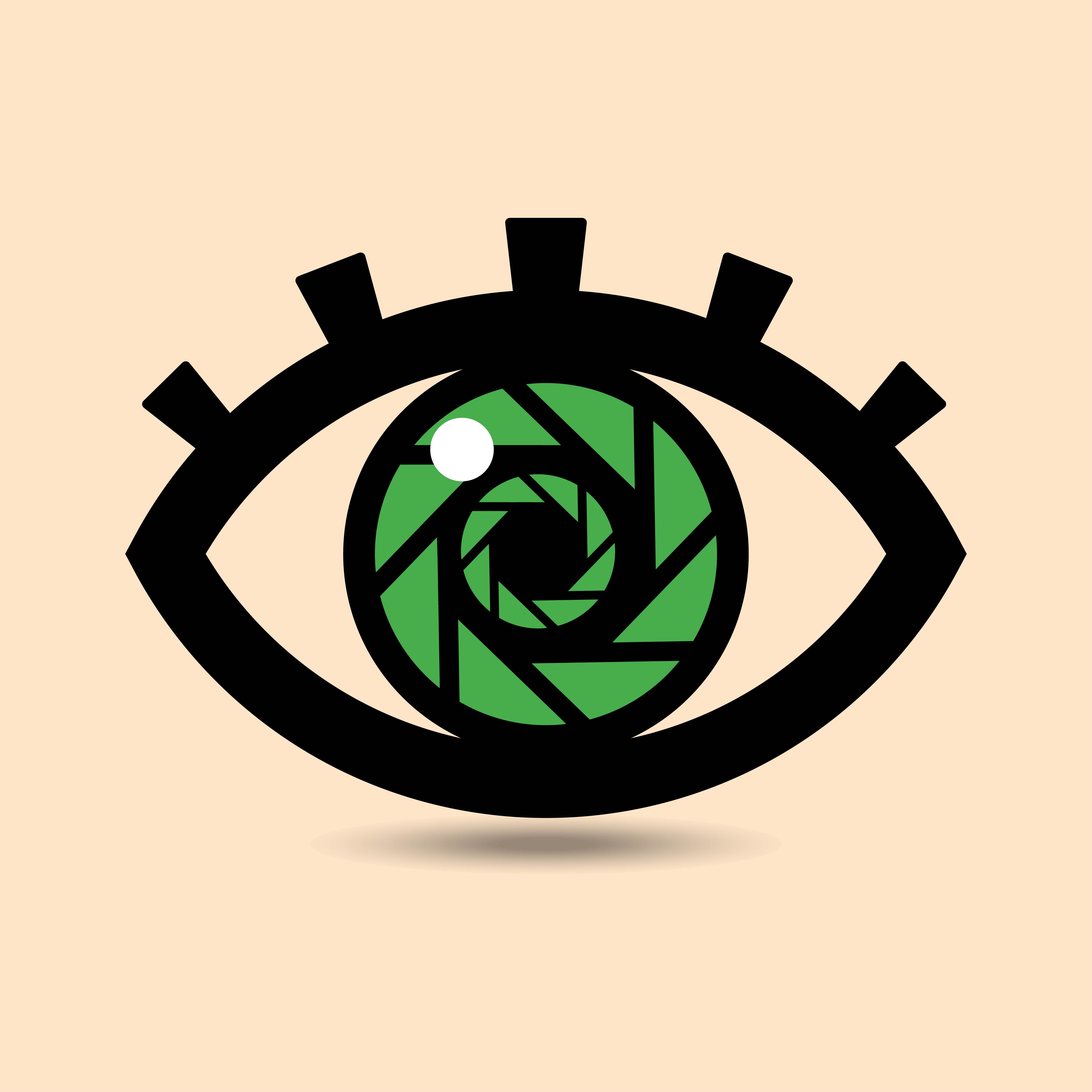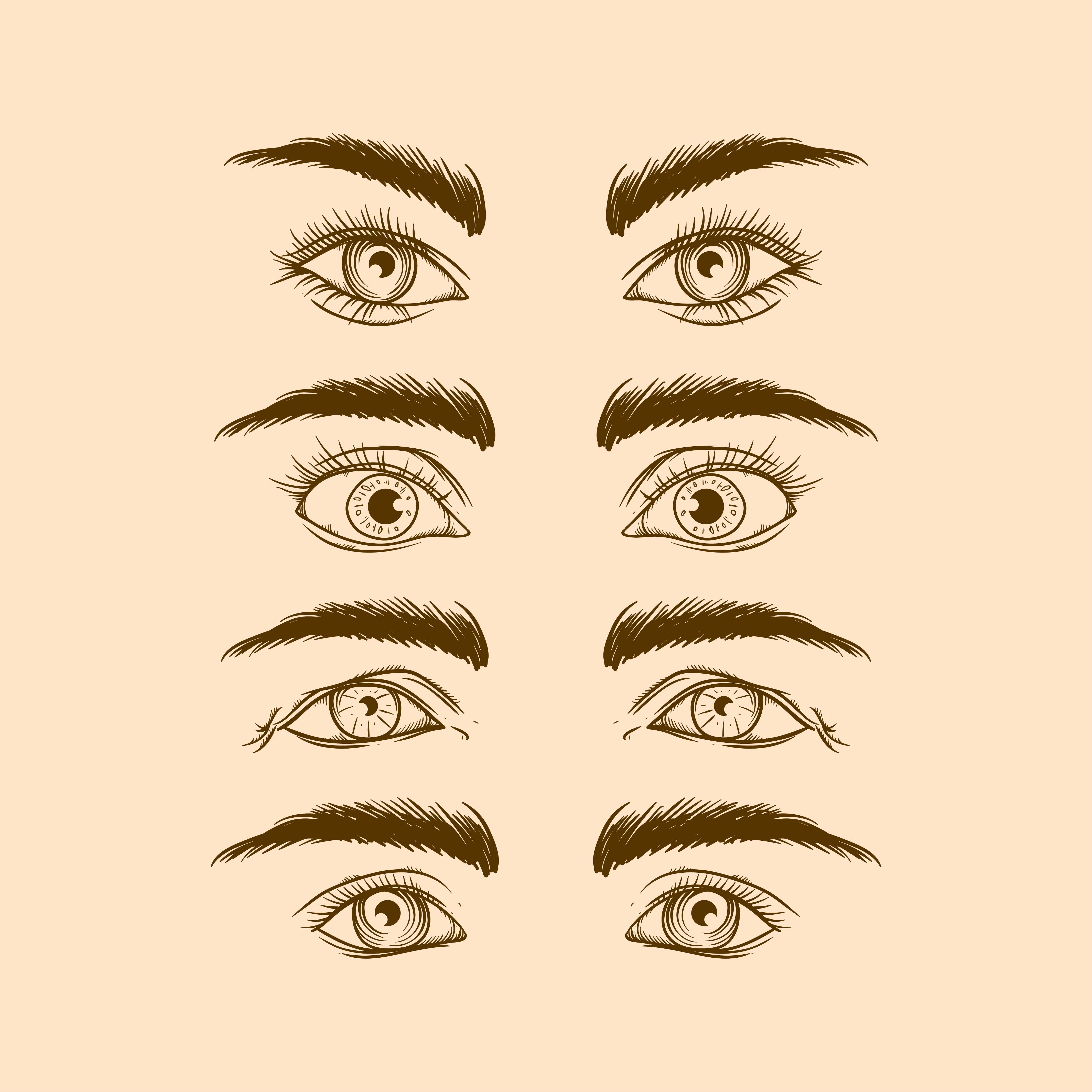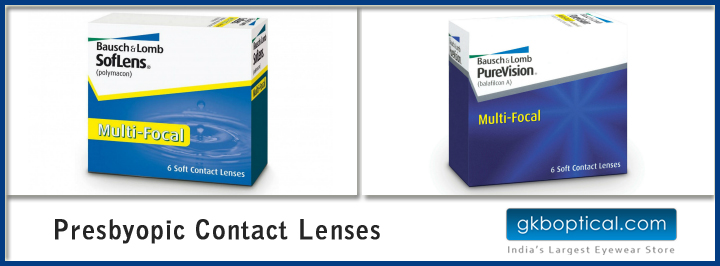
Bifocal and multifocal contact lenses are available for both soft and rigid gas permeable varieties.
What is the difference between Bifocal and Multifocal Lenses?
Bifocal contact lens has 2 powers – one for viewing clearly from far off and the other one for viewing clearly up close. Whereas, multifocal contact lenses give you added benefits over eyeglasses allowing you to view at any direction – up, down and to the sides – with similar vision. Multifocal contact lenses include progressive eyeglass lenses exhibiting a range of powers for viewing clearly – distance, near and intermediate (arm’s length) vision. Also used as a catch all term for all lenses with more than one power, multifocal lenses contain two or more lens powers to view objects at all distance.
Classification of Multifocal Contact Lenses
On the basis of design, there are basically two types of multifocal contact lenses:
Concentric ring designs
Concentric ring design are bifocal lenses with either distance or near power in the centre of the lens with alternating rings of distance or near powers circumscribing it. In the most basic form, the concentric ring design is comprised of a central circular area of one power with a ring around an alternate power, similar to a bull’s – eye.
Aspheric designs
Aspheric design is referred to as a progressive style multifocal lens, with numerous powers blended across the lens surface. Few aspheric lenses have the distance power inbuilt in the centre of lens, whereas others have the near power in the centre.
How does Multifocal Contact Lens work & is it preferable?
Most people who try multifocal contact lenses need to make few compromises on wearing it. For instance, the distance vision with multifocal contact lenses may not seem clear enough or might cause trouble with glare at night or may also cause difficulty in viewing small prints.
In some cases, people with presbyopia prefer monovision or modified monovision. Both these fitting strategies utilize single vision lenses – that are, lenses with only one power instead of multifocals. In monovision, people wear single vision contact lens on one eye for distance vision and a single vision contact lens on the other eye that endows prescription for near vision. In modified monovision, people wear single vision distance lens on one eye and a multifocal contact lens on the other to assist them to view better up close.

Therefore, to determine the best contact lenses for your vision on reaching bifocal age, GKB Opticals recommends you to consult an Ophthalmologist for better advice on which lens type to opt.
]]>- Bifocal glasses
- Reading glasses
- Multifocal or progressive glasses
- MonoVision Contact lens
- Modified mono vision Contact Lens
 Monovision Contact Lenses: Monovision is essentially the optical status of having one eye focus at a distance and the other one near. This condition allows the relief of symptoms. These lenses are one of the most economical ways which people opt for if they suffer from presbyopia. However, monovision does not work for all. There is a caution to consider it since it is a compromise. So, people from the airlines industry should not opt for this type of lens. Most people nbso online casino reviews who opt for this lens go through a phase as the brain learns to see with eye which suited for the task after understanding which eye is more dominant. Both comfort and vision can become a problem when they reach 40’s. For patients who have a minute level of comfort with reduced vision often drops out of using this type of lenses. Lens material alone will not solve the dryness problem. As an optometrist one should discuss and provide the solutions for dry eye symptoms that will help in improving the longevity and comfort of the contact lens wearer.
Monovision Contact Lenses: Monovision is essentially the optical status of having one eye focus at a distance and the other one near. This condition allows the relief of symptoms. These lenses are one of the most economical ways which people opt for if they suffer from presbyopia. However, monovision does not work for all. There is a caution to consider it since it is a compromise. So, people from the airlines industry should not opt for this type of lens. Most people nbso online casino reviews who opt for this lens go through a phase as the brain learns to see with eye which suited for the task after understanding which eye is more dominant. Both comfort and vision can become a problem when they reach 40’s. For patients who have a minute level of comfort with reduced vision often drops out of using this type of lenses. Lens material alone will not solve the dryness problem. As an optometrist one should discuss and provide the solutions for dry eye symptoms that will help in improving the longevity and comfort of the contact lens wearer.
Monovision Monovision can be a wonderful way to start with and patients for whom just one lens can solve the issue. This is simple, convenient and easy to adapt to. Modified Monovision One can also opt for modified monovision which can mean placing a multifocal lens on the non-dominant eye with either no lens or with a single vision lens for distance on the dominant eye. We can also use the term to refer to a low-add multifocal lens on one eye and you can match with a higher add multifocal on the other. Multifocal This is the most commonly used lens for multifocal and bifocal lenses. With a concentric bifocal pattern contact lens, the near correction is located in a small circle at the lens center and is surrounded by a bigger circle which contains the distance correction. This can also be a reversal where the distance correction is in the center and the near correction is in the outer ring. Selection For Lens: There are 3 things that play an important role for making your lens selection decision.
- Primary Visual Needs Of Patient
- Visual Sensitivity
- Refractive Error
For any kind of queries concerning any product related to contact lenses you can get in touch with the professional team at cs@gkboptical.com. About Jayita Chanda: For the last 6 years I have been involved in the optical industry and my love for fashionable eye wear and passion for writing has helped me in providing quality write-ups as a content writer of GKBOptical.com. Find me on Google
]]>